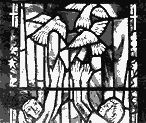Thomas Hamilton

Cullen Inquiry: Expert says Dunblane massacre may have been planned for months following challenges to "sadistic" killer's self-esteem.LINK
THE Dunblane gunman, Thomas Hamilton, may have taken his own life in a "ritual" after carrying out the massacre he had planned for months, the Cullen Inquiry heard yesterday.LINK
The assessment was given by a forensic psychologist, Professor David Cooke, on the 23rd day of the inquiry. [Ed ~ Another witness who may have been "diverting the discourse" and was not asked if he was a Freemason.LINK]
Only one more witness remains to be called, and the inquiry was last night adjourned until 8 July.
After evidence from the remaining witness, a consultant forensic scientist, Dr John Baird, the inquiry will hear final submissions from lawyers.
The inquiry heard from Prof Cooke, of Glasgow's Caledonian University, yesterday, that Hamilton might have fallen into a class of sexual sadists who turned to violence when their self-esteem was challenged. And the way he took his own life - switching weapons to a .357 revolver [Ed ~ the first policeman on the spot said in his statement there was no revolver.LINK ], after killing 16 children and their teacher with a Browning semi-automatic pistol - had ritual overtones.LINK]
I would speculate that he formed the [suicide] intention before he killed the other people", said Prof Cooke. "But that is purely speculation, based on the fact he changed weapons before killing himself - it seems ritualistic."LINK
Prof Cooke told the inquiry on Thursday that Hamilton was probably not a psychopath, but showed signs of a sadistic personality disorder and paedophile interests, and may have killed the children to take "revenge" on their parents.LINK
And he said yesterday: "There seems to be good evidence that he was planning this for several months beforehand. The fact that fewer boys were going to his clubs, the fact that he was being refused access to places to run these clubs, the fact that he was in debt, would all impact on his self-esteem."
And rather than suddenly "flipping", his murderous rampage was likely to have been the outcome of long-term personality difficulties.
The professor told risk-assessment pre-screening was unlikely to predict "dangerousness" with a high degree of reliability. Because mental disorders could flare up rapidly, reviewing firearms holders only once every five years would give him "concern".
But bringing this period down to every three years, or even annually, would still not necessarily pick up such mental problems.
The inquiry also heard how some doctors believed they should behave like "conscientious objectors", and have nothing to do with the firearms certificate process.
At present, gun licence applications need a counter-signature and doctors are one of eight categories of people specified for this purpose.
But a consultant surgeon, Arthur Morris, chairman of the BMA, said many doctors felt a GP's endorsement could carry a weight it did not warrant - because of the unpredictability of human behaviour even for experts in that field.
Another medical expert called for screening which would involve police surgeons - who would study a detailed questionaire filled in by a gun licence applicant's doctor.
Dr Hugh Davies, past president of the Association of Police Surgeons and an independent consultant forensic medical examiner, said this would at least pick up those with a history of mental illness or similar signs of unsuitability.
GPs should not be required to countersign applications as this could damage the doctor-patient relationship, and could even put GPs at risk of revenge through a refusal.
With regard to such a questionaire, there should be an onus on an applicant to show that he was fit to hold firearms - rather than was the case with the present system, where the police had to show he was not.
"I don't think it's practically possible to have a full medical examination for every person who applies for a certificate," said Dr Davies, a consultant to the Northants and Warwickshire police forces.
Apart from the logistical problems that posed, a doctor could not foresee future outbreaks of extreme behaviour like Hamilton's.
-
So far 169 witnesses have given evidence over the four and a half weeks Lord Cullen's inquiry has been sitting in Stirling. Documents weighing more than a tonne in total have been lodged, and there have been 128 written submissions from a wide variety of individuals and organisations.


Credit to Tom Minogue for unearthing the Spec roll of dishonour and also its founding members.





